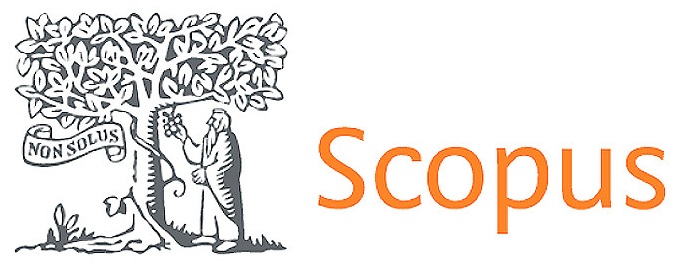Framework for ERP implementation in the context of Moroccan SMEs
DOI:
https://doi.org/10.56294/dm2025861Keywords:
ERP implementation, ERP, Moroccan SMEs, Integrated ISAbstract
The current and future challenges and the rapid evolution of markets in a context of globalization require companies to acquire the technological tools to manage information flows in order to remain up-to-date and competitive. To do so, it is ready to deploy important means to guarantee its competitiveness and its scalability. This is done mainly through the implementation of software technologies, the most popular of which are known as Enterprise Resource Planning (ERP). ERP is a popular option for small and medium-sized enterprises (SMEs) today that are looking to optimize and integrate their information systems. However, the implementation of ERP is a complex process and remains a challenge for many SMEs, even more so than for large companies, where ERP integration failures have caused some to go bankrupt. In addition, SMEs differ in a number of characteristics that can affect the implementation of ERP, so it is not wise to use the frameworks developed for the large enterprises to implement Enterprise Resource Planning Systems (ERPS) in SMEs. The objective of this research is to develop a framework for implementing an ERP in the context of Moroccan SMEs. The developed framework was used for implementing an ERPS in two Moroccan SMEs, it includes 5 phases, for each one, the objectives, critical success factors, inputs, processes, outputs and risks to be considered. This research study contributed to both practice and research, and the results could help practitioners and Moroccan SMEs when implementing an ERP and to suggest directions for future research.
References
1. ALASKARI, O., PINEDO-CUENCA, R., et AHMAD, M. M. (2021). Framework for implementation of Enterprise Resource Planning (ERP) systems in small and medium enterprises (SMEs): A case study. Procedia Manufacturing, Vol. 55, pp. 424-430.DOI: 10.1016/j.promfg.2021.10.058 DOI: https://doi.org/10.1016/j.promfg.2021.10.058
2. Benbasat, I., Goldstein, D. K., & Mead, M. (1987). The case research strategy in studies of information systems. MIS quarterly, pp.369-386. DOI: https://doi.org/10.2307/248684
3. Dantes, G. R., & Hasibuan, Z. A. (2011). Enterprise resource planning implementation framework based on key success factors (KSFs).
4. Davenport T.H. (1998), « Putting the Enterprise into the Enterprise System », Harvard Business Review, Vol. 76, No. 4, pp. 121–131.
5. Dezdar, S., & Ainin, S. (2011). The influence of organizational factors on successful ERP implementation. Management Decision, Vol. 49, No. 6, pp.911-926.DOI: 10.1108/00251741111143603 DOI: https://doi.org/10.1108/00251741111143603
6. Esteves J. et Bohórquez V.W. (2007), « An Updated ERP Systems Annotated Bibliography: 2001-2005 », Communications of the Association for Information, Vol. 19, No. 18, pp. 386-446.DOI: 10.17705/1CAIS.01918 DOI: https://doi.org/10.17705/1CAIS.01918
7. Esteves, J. M. & Pastor, J. A. (1999)."An ERP life-Cycle-Based Research Agenda," First International Workshop in Enterprise Management and Resource Planning: Methods, Tools and Architectures (EMRPS), Venice, Italy.
8. Govindaraju, R. (2012). Enterprise systems implementation framework: An organisational perspective. Procedia-Social and Behavioral Sciences, 65, 473-478.DOI: 10.1016/j.sbspro.2012.11.151 DOI: https://doi.org/10.1016/j.sbspro.2012.11.151
9. Haddara M. et Zach O. (2012), « ERP Systems in SMEs: An Extended Literature Review », International Journal of Information Science, Vol. 2, No. 6, pp. 106-116.DOI: 10.5923/j.ijis.20120206.06 DOI: https://doi.org/10.5923/j.ijis.20120206.06
10. Jagoda, K., & Samaranayake, P. (2017). An integrated framework for ERP system implementation. International Journal of Accounting & Information Management.DOI: 10.1108/IJAIM-04-2016-0038 DOI: https://doi.org/10.1108/IJAIM-04-2016-0038
11. Lune, H., & Berg, B. L. (2017). Qualitative research methods for the social sciences. Pearson.
12. MALHOTRA, Rajiv et TEMPONI, Cecilia. (2010). Critical decisions for ERP integration: Small business issues. International Journal of Information Management, Vol. 30, No. 1, pp. 28-37. DOI : 10.1016/j.ijinfomgt.2009.03.001 DOI: https://doi.org/10.1016/j.ijinfomgt.2009.03.001
13. Marciniak, R. (2001). Piloter les technologies de l'informatique et des télécoms-Modèles et outils, ouvrage collectif, éditions Weka.
14. Markus, M. L., Tanis, C., & Van Fenema, P. C. (2000). Enterprise resource planning: multisite ERP implementations. Communications of the ACM, Vol. 43, No. 4, pp.42-46.DOI: 10.1145/332051.332068 DOI: https://doi.org/10.1145/332051.332068
15. MARTIN, M. H. An ERP strategy (1998). Fortune, Vol. 137, No 2, pp. 149-151.
16. MIRANDA, Rowan (1999). The rise of ERP technology in the public sector. Government Finance Review, vol. 15, pp.9-18.
17. O’brien, J. A., & Marakas, G. M. (2010). Management information systems. New York
18. Olson, D.L. and Staley, J. (2012). Case study of open-source enterprise resource planning implementation in a small business. Enterprise Information Systems, Vol. 6, No. 1, pp.79–94.DOI: 10.1080/17517575.2011.566697 DOI: https://doi.org/10.1080/17517575.2011.566697
19. Peslak, A. R., Subramanian, G. H., & Clayton, G. E. (2008). The phases of ERP software implementation and maintenance: A model for predicting preferred ERP use. Journal of Computer information systems, Vol. 48, No. 2, pp.25-33.
20. PLISKIN, Nava et ZAROTSKI, Marta (2006). Big-Bang ERP Implementation at a Global Company. In: Cases on Information Technology Planning, Design and Implementation. IGI Global, pp. 27-40. DOI: 10.4018/978-1-59904-408-8.ch002 DOI: https://doi.org/10.4018/978-1-59904-408-8.ch002
21. Ross, J. W., & Vitale, M. R. (2000). The ERP revolution: surviving vs. thriving. Information systems frontiers, Vol. 2, No. 2, pp.233-241.DOI: 10.1016/j.procs.2016.09.179 DOI: https://doi.org/10.1023/A:1026500224101
22. SOMERS, Toni M. et NELSON, Klara G. (2004). A taxonomy of players and activities across the ERP project life cycle. Information & Management, Vol. 41, No. 3, pp. 257-278.DOI: 10.1016/S0378-7206(03)00023-5 DOI: https://doi.org/10.1016/S0378-7206(03)00023-5
23. Strong D. et Volkoff O. (2010), « Understanding Organization—Enterprise System Fit: A Path to Theorizing the Information Technology Artifact », MIS Quarterly, Vol. 34, No. 4, pp. 731-756. DOI: 10.2307/25750703 DOI: https://doi.org/10.2307/25750703
24. TEITTINEN, Henri, PELLINEN, Jukka, et JÄRVENPÄÄ, Marko. (2013). ERP in action—Challenges and benefits for management control in SME context. International Journal of Accounting Information Systems, Vol. 14, No 4, pp. 278-296. DOI: 10.1016/j.accinf.2012.03.004 DOI: https://doi.org/10.1016/j.accinf.2012.03.004
25. Upadhyay, P., Jahanyan, S., & Dan, P. K. (2011). Factors influencing ERP implementation in Indian manufacturing organisations: A study of micro, small and medium‐scale enterprises. Journal of Enterprise Information Management, Vol. 24, No. 2, pp.130–145. DOI: 10.1108/17410391111106275 DOI: https://doi.org/10.1108/17410391111106275
26. Yin, R. K. (2003). Design and methods. Case study research, vol. 3, No. 9.2
27. Yin, R. K. (2009). Case study research: Design and methods Vol. 5. Sage
Downloads
Published
Issue
Section
License
Copyright (c) 2025 Yassine ZOUHAIR, Younous EL MRINI, Mustapha BELAISSAOUI (Author)

This work is licensed under a Creative Commons Attribution 4.0 International License.
The article is distributed under the Creative Commons Attribution 4.0 License. Unless otherwise stated, associated published material is distributed under the same licence.




